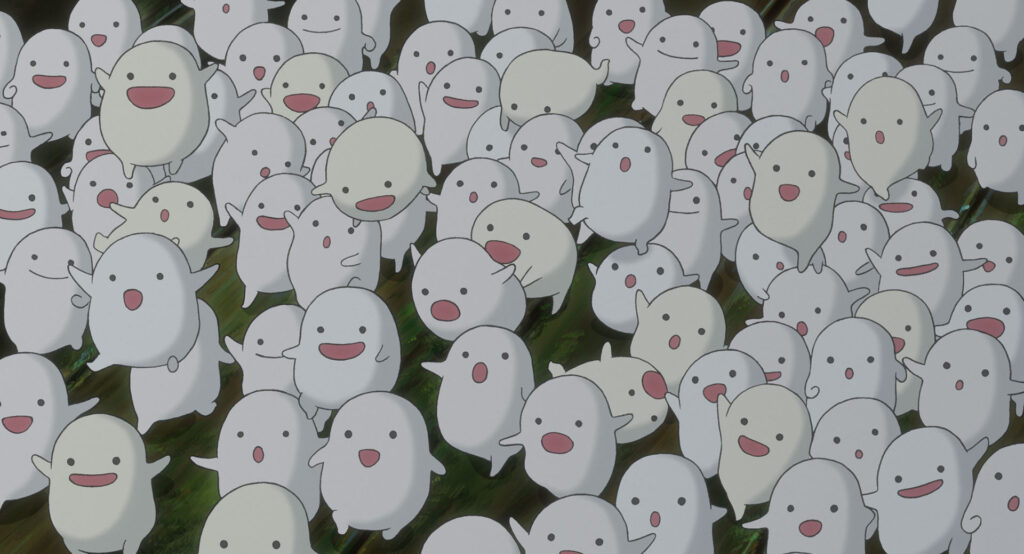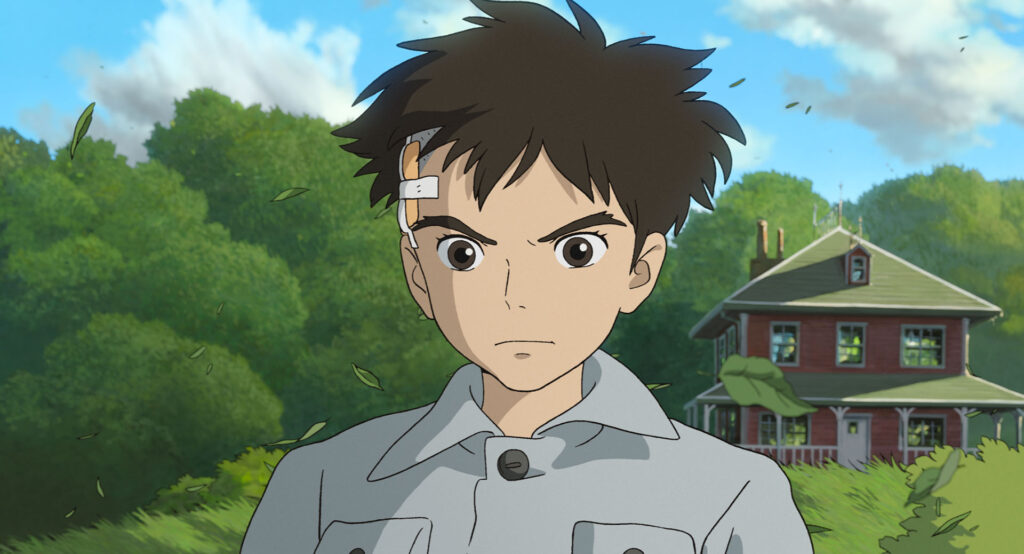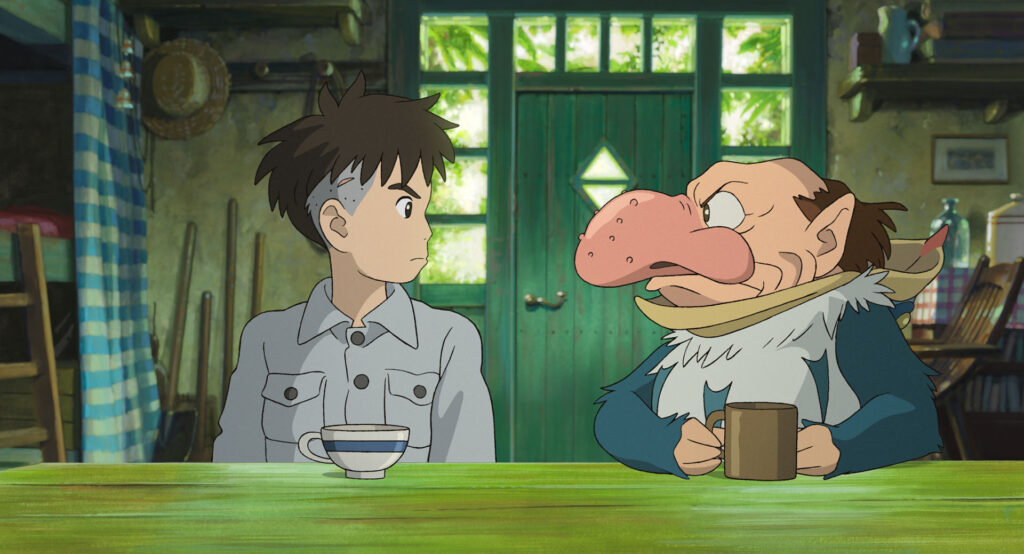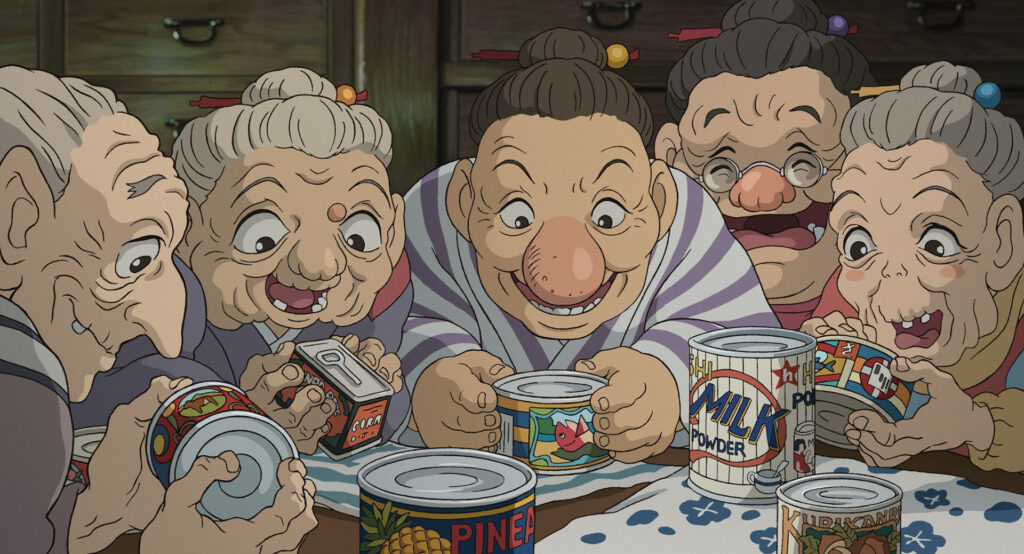This article originally appeared in the October 2023 issue of Connect.
Jessica Adler (Kagoshima)

If you have had any interest in Japanese anime or manga, you have probably heard Studio Ghibli or Hayao Miyazaki at one point in your life. One of the most famous Japanese animation directors to break into the international animation movie scene, Hayao Miyazaki and his production company Studio Ghibli is beloved not only in Japan, but worldwide. While the history of Studio Ghibli may not be all flowers and roses, it is an absolute must for any anime fan to watch and fall in love with at least one of Miyazaki’s movies. While Hayao Miyazaki (age 82) has claimed to never make any more films and has officially retired from the animation scene, he is at it again—with the very curious release of his latest film 君たちはどう生きるか (Kimitachi wa dou ikiru ka) which translates to “how do you live” but is known to English audiences as The Boy and The Heron.
Normally, anime fans would rave at the masterful and beautiful animations that usually come with the teaser trailer for the upcoming movie. However, the film’s producer had deliberately requested for no advertisements or trailers to run for the film (more details at this link here), a very unusual move for the most well-known Japanese animation studio in the industry. Ghibli Studio producer Toshio Suzuki wishes for his watchers to enjoy the film with just a single visual poster, with little to no expectations (according to an interview with Suzuki). Thus, the only clue we had so far before Japan’s July theatrical release was the curious poster drawn in watercolor depicting a giant bird that just happened to have two sets of eyes. Before viewing the film I had the hope that the rumor that his newest film being a fantasy would be true—I love being whisked away into Miyazaki’s worlds of spirits and magic.
I was not disappointed.
*Warning: there are slight spoilers for the film’s content from this point onward.*

The Animation
Hayao Miyazaki has a very unique way of portraying natural disasters, such as the deep gurgling of the earth to signify an earthquake in his previous title The Wind Rises. The movie opens with a very stylistic animation depicting fire, which immediately struck me as a style reminiscent of other animation studios. Low and behold, in the ending credits there were mentions of two studios that have also gained the reputation of portraying beautifully haunting imagery of fire and water: ufotable and Studio 4°C. I personally am thrilled with the collaboration of studios and hope this is the start of a path for Studio Ghibli to continue releasing future films.
My friend said they observed many moments of symbolism throughout the film, and I agree. Some scenes were more obvious than others, but even without the critical lens I believe it was a memorable and beautiful film. The protagonist’s emotions relating to the passing of his mother were poignant, and the landscapes breathtaking while paired with the haunting soundtrack. The scenery starts with very dark colored tones, such as the deep green of the pond where the heron that tempts the protagonist strides languidly in wait, to the mysterious overgrown vine-covered tower in the nearby woods of the protagonist’s new home. If Howl’s Moving Castle can be described as a fantasy, then The Boy and The Heron is best described as a coming-of-age movie filled with the darker tones of magical realism.

The Story
The Boy and The Heron is a tale of familial bonds and journeying with grief. At first glance it can be described as a fantastical journey through a world of magic, but I believe this is a film that will be appreciated more with every viewing. The core of the film is about the journey of a boy (named Mahito) who lost his mother trying to navigate his new life with his new step-mother. When his new step-mother vanishes he decides to search for her and bring her back home, which forces him to step into a fantasy world where life and death manifest in shockingly grotesque, unassuming and beautiful forms.
In this world, Mahito meets friends and foes as he tries to navigate this breathtaking world with the heron that he first encountered in the mysterious dilapidated tower. The viewers quickly find out that a multitude of different species of birds inhabit this world, looking rather harmless but often attempting to harm Mahito whenever they cross paths. I personally had fun guessing the true identities of the characters Mahito met during his adventure, as appearances are deceiving in the mysterious world he travels through. Overall, I was rather satisfied with the film and am eager to watch it again.

A True Send-Off from Hayao Miyazaki
The Boy and The Heron is filled with a plethora of little references to Studio Ghibli’s previous works. Just off hand I was able to make a substantial list of scenes that played tribute to the studio’s collection of films. My particular favorite would be the mysterious tower and its magic doors, as I absolutely love Howl’s Moving Castle. I am excited for the next opportunity to see it and find more hidden references. In that regard, it truly felt like a send off to Studio Ghibli fans. Of course, you do not need to view any of Studio Ghibli’s previous films to immensely enjoy and appreciate Miyazaki’s latest masterpiece. I fully recommend the film for any and all animation appreciators. For all that are anticipating to be moved by Miyazaki’s storytelling, I can assure you that you are in for a treat!

Jessica is a fifth-year JET and the current Entertainment editor of CONNECT Magazine. Between playing her rhythm games and watching the latest season of anime, she enjoys journaling about her travels throughout Japan. Her favorite Ghibli films are Howl’s Moving Castle, Spirited Away, and Princess Mononoke.



![CONNECT ART ISSUE 2024 SUBMISSIONS [CLOSED]](https://connect.ajet.net/wp-content/uploads/2024/04/ARTISSUE-INSTA-600x500.png)





